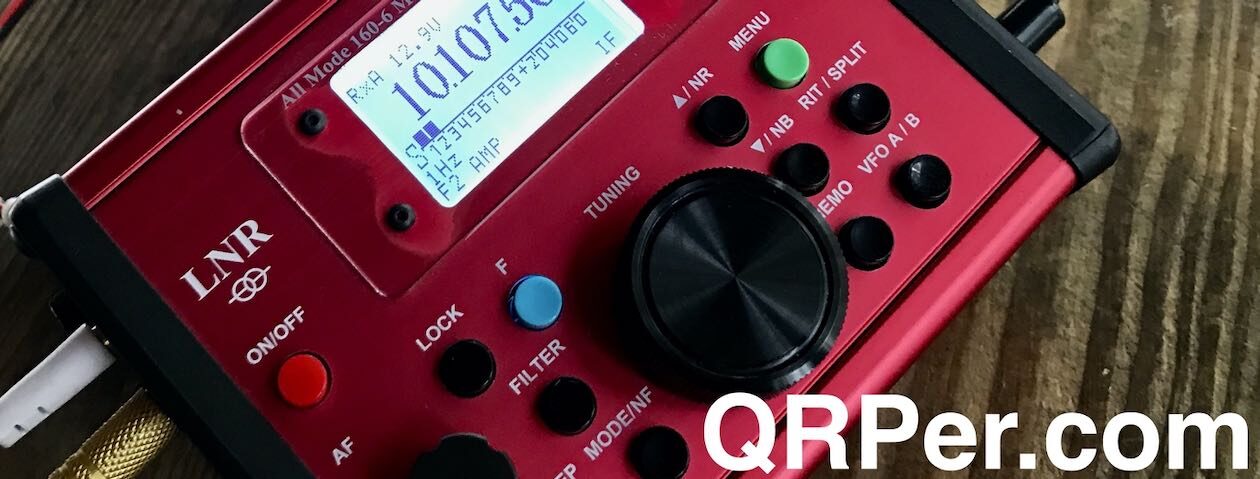Many thanks to Scott (VA3EKR) who shares the following guest post which was originally posted on his blog:
Mar. 29, 2025, Troubleshooting Audio Capture with Voice Recorder
by Scott (VA3EKR)
When I activate a park for POTA, I always use HAMRS, running on a tablet as I get better battery life than a laptop, and I confess I still like the confirmation from QRZ that you have the correct contact, or that it at least matches the state you think it is. Still, sometimes I do not have internet connectivity, and additionally, I often neglect to put in the proper RST of the QSO in the fields (POTA doesn’t actually require it), as the tablet is not terrific about hopping between fields.
A nice solution to this is audio capture, where I can fix a broken call sign, fix the RST before submitting to QRZ/LOTW. I am too self-conscious to video myself, so I use an audio recorder. It is pictured below. It was only about CAD $100, and has a nice line-in and a line-out so that I can record while I listen.
Next to the recorder is a toroid I had as extra when I made a transformer last summer, and a relatively long audio cable that I coiled as many times as I could around the toroid.
This is an example of the audio quality before troubleshooting the problem. Just the first few seconds demonstrate the issue.
Audio PlayerThe received audio is reasonable, and it is when I am sending that the problem shows itself. It was unclear what the problem was, perhaps one of:
- Bad audio levels, either the gain on the recorder, or the monitor level of the KX2.
- Stray RF being coming back from the antenna on transmission
- The audio input cable acting as an antenna picking up transmission
I did not think it was bad audio levels, as I had done some playing-about, though not in a terribly rigorous fashion. The stray RF was my largest suspicion, as I had only started noticing the problem when I started using a Ham Stick in my car during the winter months. Inside the car, there are a series of LEDs on the transmission shifter that indicate what gear the car presently is engaged. I noticed that when I transmit, the “drive” LED flickered a LOT, and this worried me. I had not bothered to ground the HamStick to the car chassis, but did run a 17-foot counterpoise that I clipped to the antenna shield, and I hoped this would be sufficient. As corroboration, I have been able to hit France, Spain, Norway, Oregon and Idaho with the setup.
After a very chilly and rainy day at the horse barn, I was tempted to do an activation, but I decided to stay in the warm house and do some experimentation. I set up in the living room with my AlexLoop that I got in Dayton last year. This gave me the opportunity to try another configuration, and see if the audio was the same as when using the Ham Stick in the car. Indeed it was.
I tuned the loop for maximum noise on 20m, and tuned with the internal ATU of the KX2. I found a POTA activation in North Carolina, and he gave me a 599 with 5 W! I love getting surprising performance with obviously bad operating conditions, like from the interior of a brick house! And the antenna was oriented for east-west, not south! But the audio was still terrible when transmitting.
I spent some more time adjusting the monitor level, and recorder gain. Still nothing sounded good.
I next wanted to see if perhaps the common-mode current was the issue, so I used a LDG 1:1 UnUn, shown below. I was really hoping it was not this, since when you add the BNC connectors and the additional cable, the added size is about the size of a KH1!
After putting the transformer in line with the antenna, the audio was not appreciably different.
The last experiment, corresponding with the last theory, was to put in an audio cable that had better shielding from HF.
This seemed to really do the trick! Here’s the resulting audio with a QSO to North Carolina from inside my living room. There is an initial try at the beginning, and then another successful QSO at the 1:17 mark.
Audio PlayerI hope that if anyone else encounters similar issues recording from their radio, that this might prove useful.







